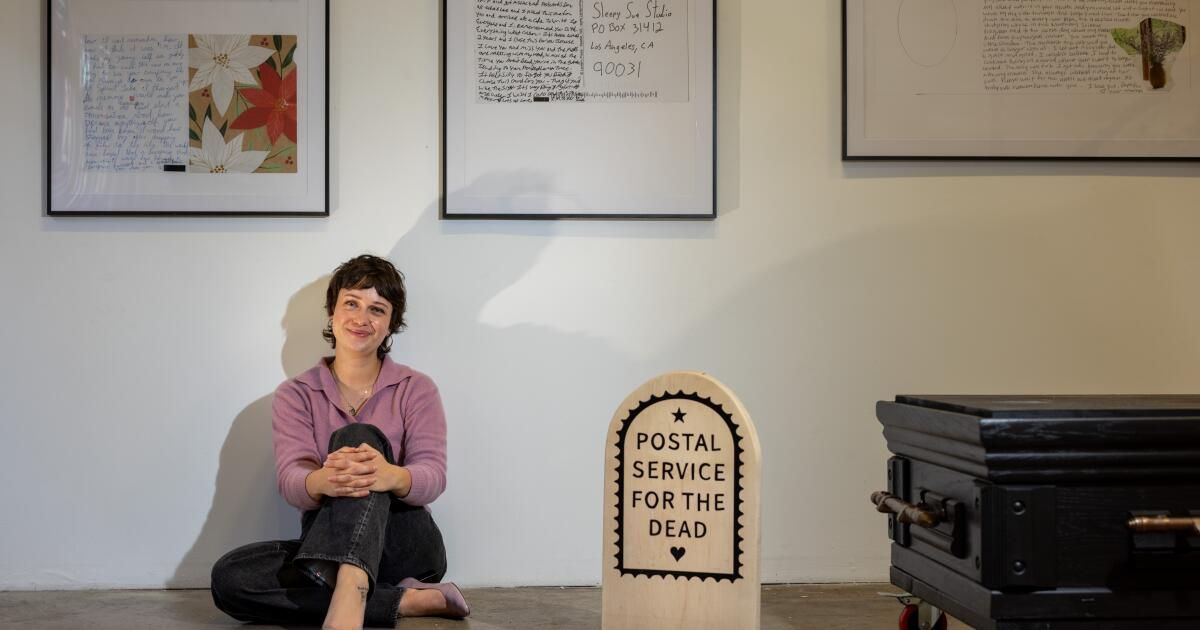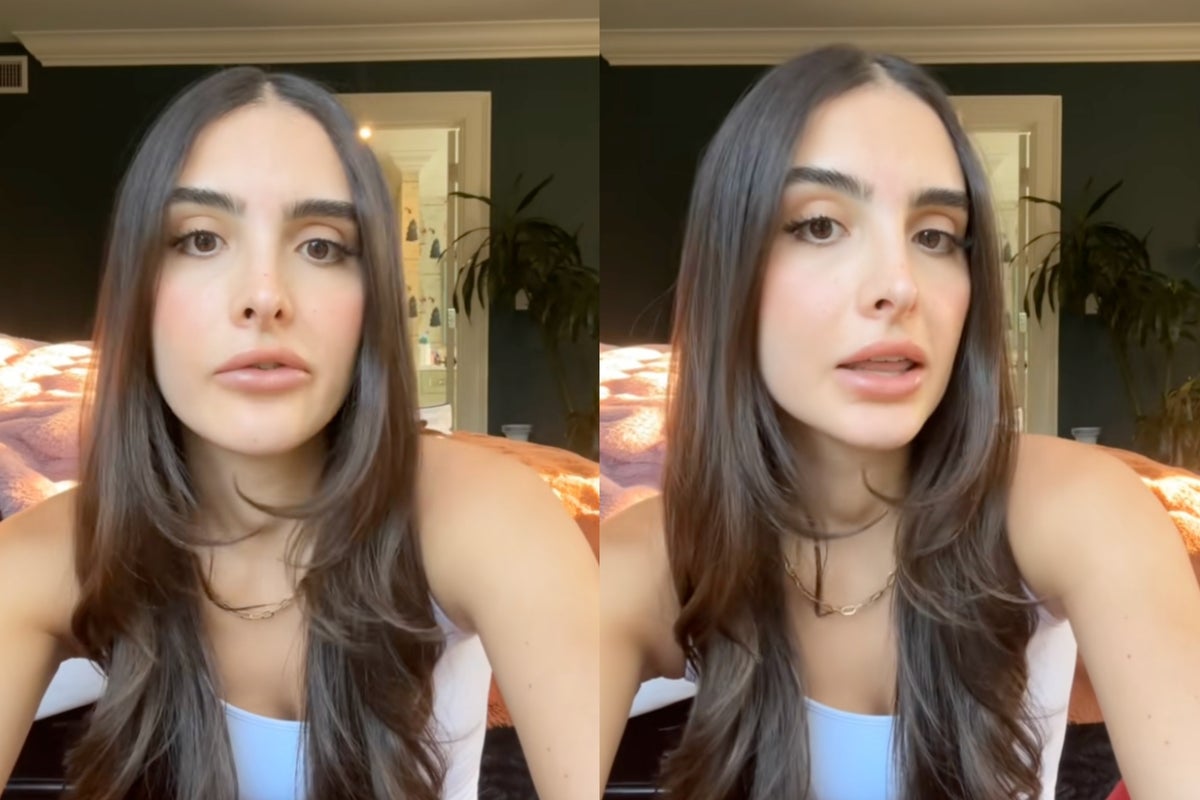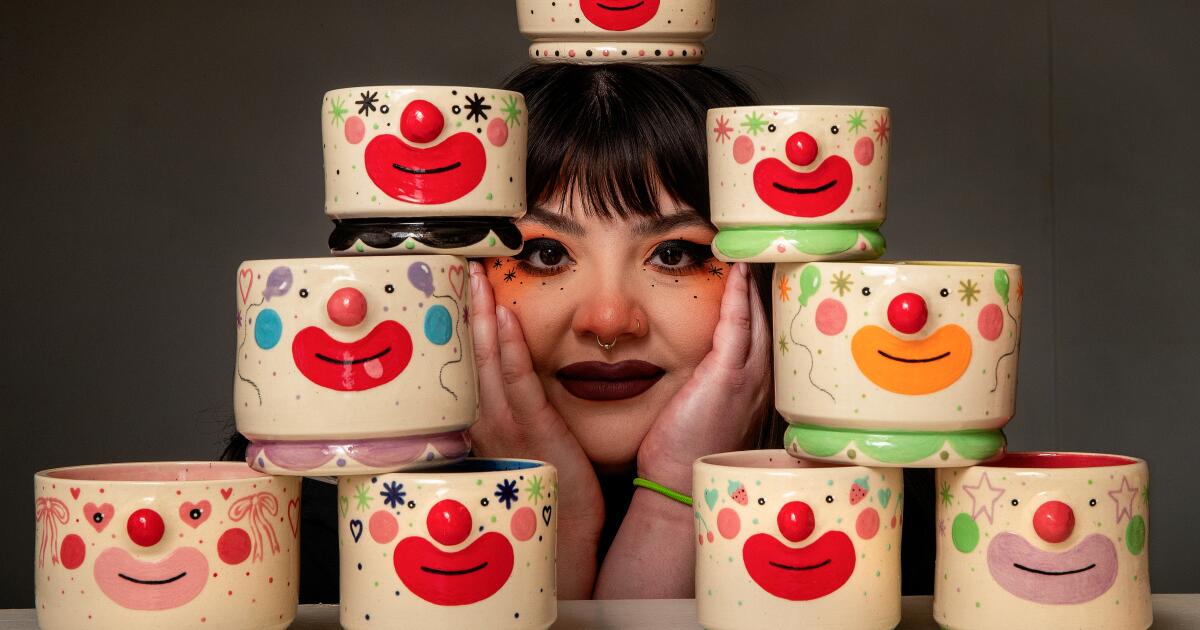Mail is sent to the dead all the time: advertisements, renewal notices, unpaid bills. But if you want to send a letter to someone you've lost with a chance they'll actually receive it, there's a mailbox in a Los Angeles post office that has mysterious power.
The Postal Service for the Dead, started by artist Janelle Ketcher, gives the living a way to physically send letters to those who have left this realm. The letters are stored and, if desired, shared with the public. Senders indicate on the back of envelopes whether they want the notes to remain sealed or not; Leaving them blank means do not open, a heart means read but do not share and a star indicates share. The Postal Service for the Dead also functions as a community archive for those who have lost someone, that nation that transcends borders and dimensions, whose language is mourning.
On November 30, 2022, Ketcher was surprised with something on what would have been his mother's 68th birthday. “I woke up that day with a really deep need to send him a birthday card,” Ketcher says, so he searched the Internet for a way to send a letter to someone who had died, but found nothing.
Inspired by projects like the Wind Telephone, an unplugged payphone in a garden in Ōtsuchi, Japan, where people can call the deceased, Ketcher decided to do it herself. She opened a mailbox at a post office in Lincoln Heights and threw a instagram account. In the year since, dozens of people have sent letters, from the West Coast, the Carolinas, Florida, France and beyond.
Janelle Ketcher shows letters that people have written to loved ones who have passed away. Some of these notes are on view in an exhibit at Studio Death Doula LA in downtown Los Angeles.
(Jay L. Clendenin / Los Angeles Times)
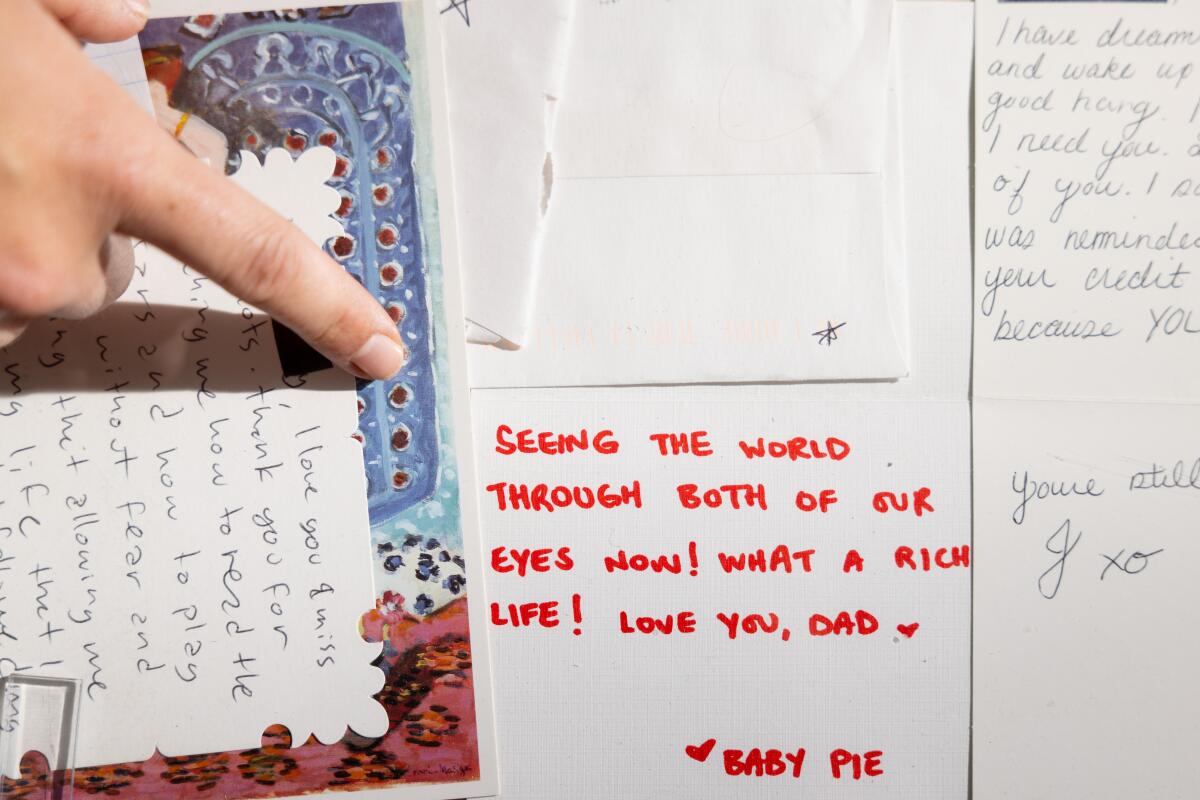
A detail of two handwritten notes sent to the post office box managed by Ketcher. Writing notes to the dead can be a cathartic way for some people to process grief.
(Jay L. Clendenin / Los Angeles Times)
They include postcards, handwritten notes and homemade collages. There are sweet, nostalgic memories, memories of times lived and updates of lives lived, but also letters that express the anger, confusion and despair that can accompany the death of someone close to us.
“A big problem with grief,” Ketcher says, “is that even within a family or community unit, everyone may be grieving very differently.”
The archive includes letters to family, friends, pets, and those who are not physically gone but are lost in other ways. Most letters sent through the Postal Service for the Dead have been marked for sharing. Only one letter, sent in a terracotta-colored envelope, was left blank, meaning it will remain sealed and unread.
An exhibit of the letters marked as shareable by appointment can currently be seen in a space at the center run by Jill Schock, whose Death Doula LA provides end-of-life services. Collaboration is a big part of what the Postal Service for the Dead does. In the events she hosts around town, Ketcher includes other organizations and people in the local death care industry, such as Mortician in the Kitchen, a project by Amber Carvaly, a licensed funeral director whose work focuses on the role of food in death. and grieving process.
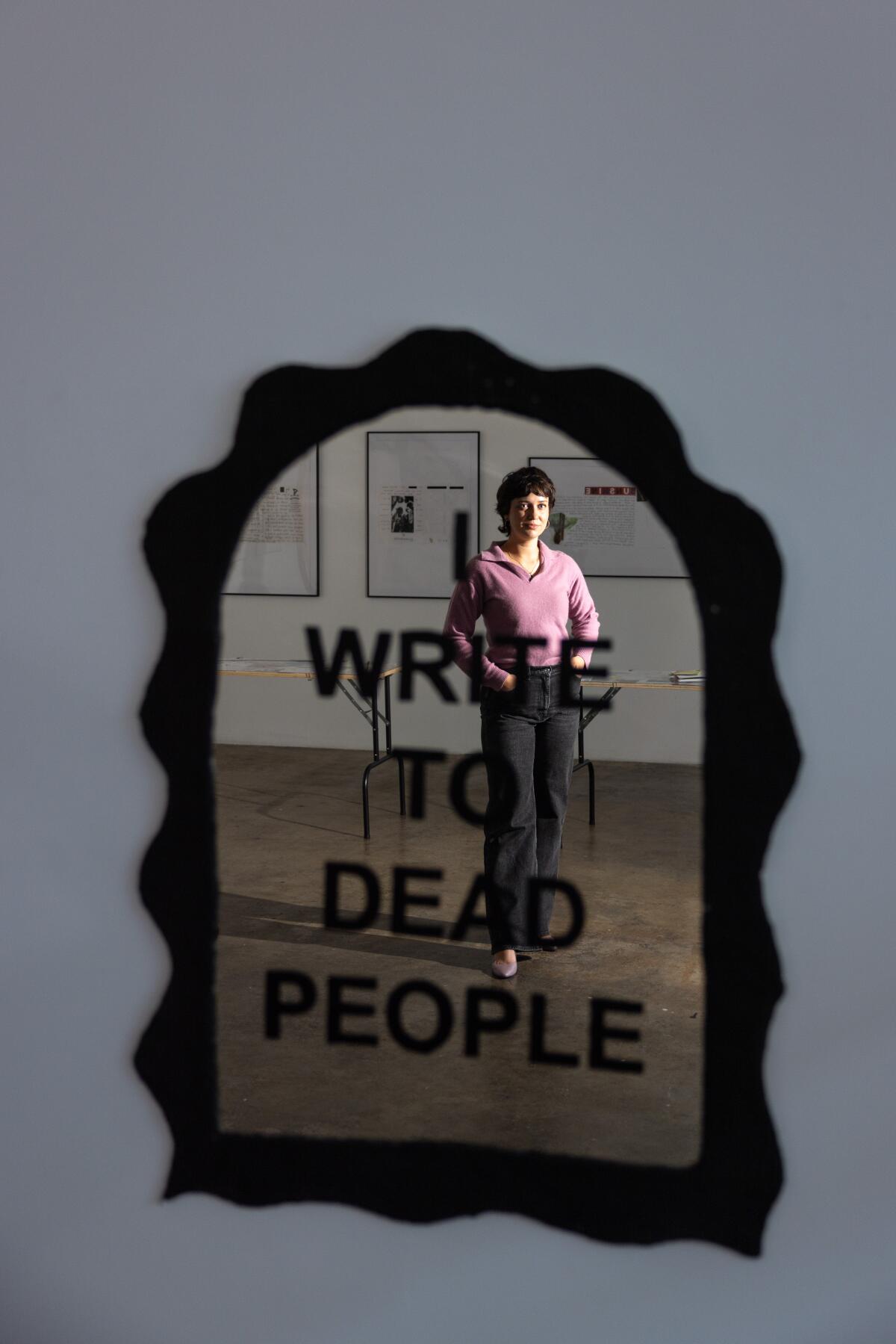
The Postal Service for the Dead project began about a year ago when Ketcher felt the need to write a letter to his late mother on what would have been her birthday.
(Jay L. Clendenin / Los Angeles Times)
Ketcher graduated from the Kansas City Art Institute in Missouri and, for her thesis project, focused on her mother's aging and death process. Her mother was diagnosed with frontotemporal dementia when Ketcher was 15, and she says, “One of the things she outgrew pretty quickly was talking. So my sisters and I had to find ways to communicate. It was a lot of dancing and music and just leaning into whatever the reality of it was.”
After moving to Los Angeles in 2017, Ketcher completed several end-of-life training and peer support programs with groups such as the Arts & Healing Initiative and Going with grace. With many describing health care in the United States as failing, it would seem that death care is, too.
“We live in a society that denies death,” says Melinda Ramos, a licensed embalmer, funeral director and crematorium manager in Los Angeles.
When he tells people what he does, Ramos often receives negative reactions. “People say, 'Oh, that's weird.' That's creepy,'” Ramos says. “And I was thinking, 'What's so strange and creepy about being able to take care of someone and honor them in their last moment with their family?'”
Ramos herself recently experienced back-to-back losses. Her mother, her grandmother, and her pug Eli died within a year. She sent letters to each of them through the Postal Service for the Dead. Her letter to her dog included an apology for having to put him down due to terminal cancer. “I felt a lot of guilt,” Ramos says. The letter helped her overcome those feelings.
“You were by my side through the ups and downs,” Ramos wrote to Eli, “the moment you walked me down the aisle to marry your dad, the sleepless nights studying for the mortuary sciences program, and the worst day, when my mom He died of esophageal cancer. “You were my little shadow.”
Another letter writer, Madison, who lives in Des Moines and prefers not to have her last name published, describes her late grandmother, LaVerne, as a jack of all trades. LaVerne was born in North Dakota during the Dust Bowl era of the 1930s, she made violins and upholstered furniture and sent Madison hand-painted cards with bunnies and birds.
“For mine, I didn't want it to be a sad thing,” Madison says of the letter she sent. “Grief is sometimes very sad and there are definitely times when my grief is different than that in that letter. But it's okay to remember the really happy times, even if they weren't happy all the time.”
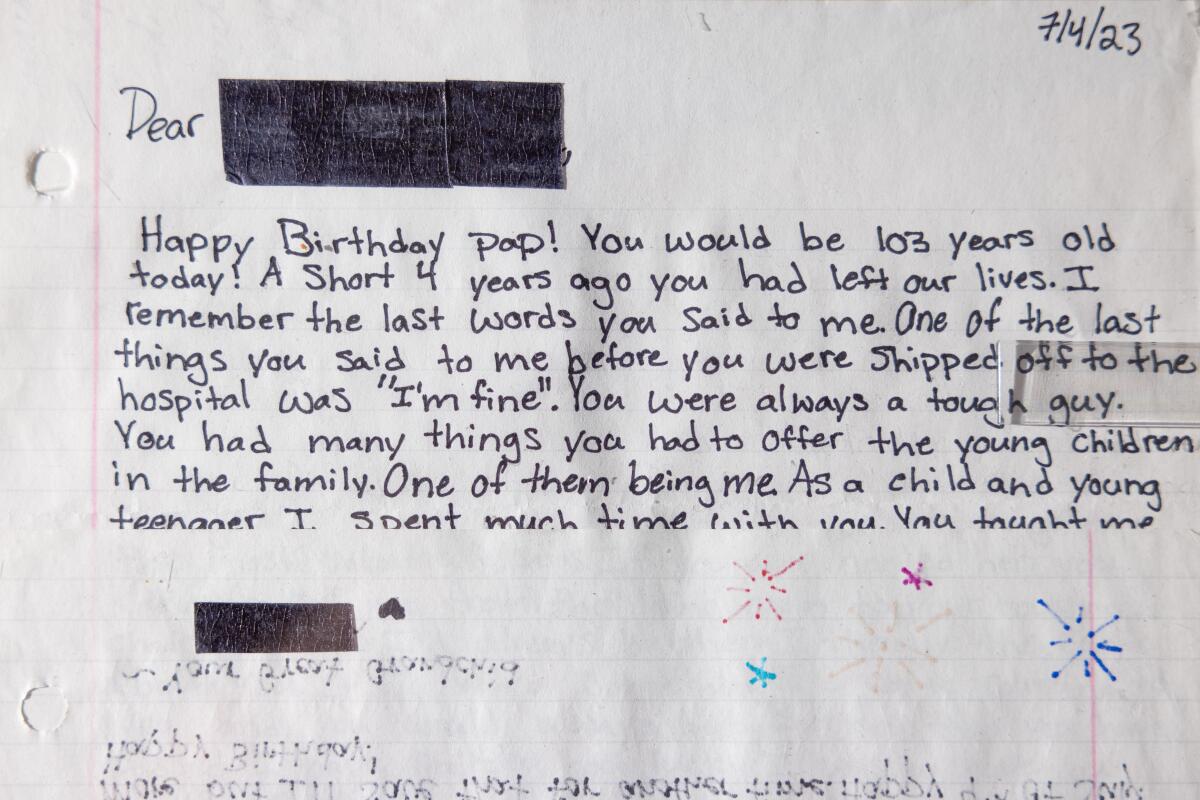
Ketcher's project was inspired by others such as the wind telephone, an unplugged payphone in a garden in Ōtsuchi, Japan, where people can make phone calls to those who have died.
(Jay L. Clendenin / Los Angeles Times)
Madison says there's something different about the physical aspect of the mail. “There's something about sealing a letter, the envelope, that feels really final,” she says. “Putting it into words is therapeutic. I already have these thoughts, so I just write them down and send them out into the ether.”
Writing letters to the dead is a long-standing practice—”A lot of people burn their letters, and that can be very helpful, too,” Ketcher says—but being able to send them somewhere offers a strange, indefinable benefit.
And there's something appropriate about the Postal Service for the Dead being in Los Angeles. The city's mythology, a brightly lit dreamscape with a dark side, makes it the perfect portal between worlds.
Ketcher knows that not everyone believes in an afterlife and that letters may not reach their intended recipients.
“I'm just a keeper,” Ketcher says of the cards. “But I do think you can continue a conversation, you can continue a connection through storytelling.” The artist pauses and adds, “If you get a letter from someone you love, there's a little bit of magic in that.”
Visits to the exhibition at DDLA are by appointment. A closing reception will be held from 5 to 9 pm on December 30. Letters to the deceased may be sent to Sleepy Sue Studio, PO Box 31412, Los Angeles, CA, 90031, USA.

